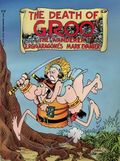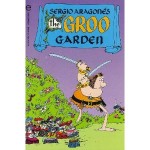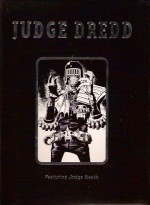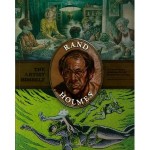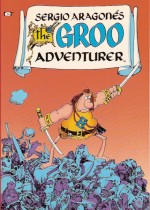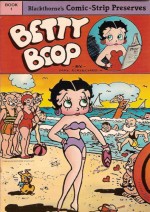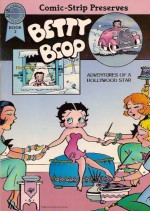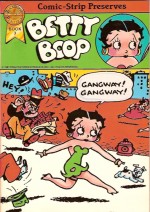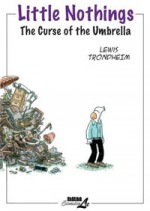
By Lewis Trondheim, translated by Joe Johnson (NBM/ComicsLit)
ISBN: vol. 1: 978-1-56163-523-8 vol. 2: 978-1-56163-548-1 vol. 3: 978-1-56163-576-4
Gift pack ISBN: 978-1-56163-599-3
I first became aware of Lewis Trondheim’s subtly enchanting vignettes in Fantagraphics’ Mome comics anthologies rather than through its internet presence and it’s an utter delight for this old duffer (me, not him) to see this blend of cartoon philosophy, personal introspection, whimsical inquiry and foible-filled observations gathered into such handy tomes for constant re-reading.
With over 100 books sporting his name, (which isn’t actually Lewis Trondheim but Laurent Chabosy) the writer/artist/editor and educator is one of Europe’s most prolific comics creators: illustrating his own work, overseeing animated cartoons of such print successes as La Mouche (The Fly) and Kaput and Zösky and editing the younger readers book series Shampooing for Dargaud.
His most famous works are the global hits ‘Les Formidables Aventures de Lapinot’ (translated as The Spiffy Adventures of McConey) and, with Joann Sfar, the Donjon (Dungeon) series of nested fantasy epics (see the translated Dungeon: Parade, Dungeon: Monstres and Dungeon: the Early Years).
In his spare time he has written for satirical magazine Psikopat and provided scripts for many of the continent’s most popular artists – such as Fabrice Parme (Le Roi Catastrophe, Vénézia), Manu Larcenet (Les Cosmonautes du futur), José Parrondo (Allez Raconte and Papa Raconte) and Thierry Robin (Petit Père Noël),
He is a cartoonist of uncanny wit, piercing, gentle perspicacity, comforting affability and self-deprecating empathy and prefers to control scrupulously what is known and said about him…
A little while ago the well-travelled graphic introvert began drawing a deliciously intimate cartoon blog wherein all the people Trondheim knows are rendered as anthropomorphised animals (with him a dowdy, parrot-beaked actor/director) which has been edited into a series of enchanting full-colour albums. Page after page of introspective, whimsical, querulous and enticingly intriguing reportage has emerged since, and thanks, presumably, to the global recession you can now pick up the first three in an extremely economical bargain gift pack…
Volume 1, The Curse of the Umbrella, features ruminations on gardening and possessing a vegetable death-touch, introduces his family, examines the love-hate relationship with technology and computer games and covers the dramas of becoming first time cat-owners at an advanced age. Hypochondria and the internet’s impact as an enabler of such recurs, as do work-processes for the self-employed, keeping fit, snacks, memory, death, bird-poop, the weather and travel to comics events in exotic locations such as the Reunion Islands and Edinburgh. The daily bulletins explore little events and really big themes and there are also purely visual moments that you just have to see to get…
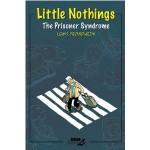
In volume 2, The Prisoner Syndrome, the cascade of cartoon delights continues with more of the same whilst adding summer beach madness, floating with the fishes, exploring volcanoes, ecology and hotel wastefulness, comic convention memory (so different from the regular kind). There’s animal antics, travel, energy-saving, visiting Africa, Guadeloupe, Romania and London, the differences between men and women, global political crises and the heartbreaking helplessness and inevitable consequences of seeing your pet die.
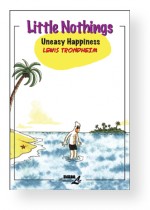
Uneasy Happiness, the third and final volume in this collected set, sees the bird-faced gentleman amicably nit-picking and further musing his way through the life of an old and successful comic creator: travelling to conventions, making stories and dealing with the distressingly peculiar modern world, especially focusing on his increasing hoarding proclivities, concerns over his creative and financial legacy, mice in the bookshelves and packing…
The ruminations and anti-dramas regularly range from his inability to de-clutter (every comic maven’s weakness!), toilet etiquette (public and private), gadgets, marriage, parenthood, the actual science in TV shows, how mad cats are, brilliant ideas that come when you’re asleep, computers, and getting old, interspersed with reactions to the many wonderful places he has visited on the comics convention circuit (Venice, Portugal, Fiji, Australia and others in this volume).
All genteelly re-coloured for book publication, these Little Nothings have become some of my favourite 21st century graphic novels; gently contemplative, subtly pleasing…
I strongly suggest that if you need a little non-theological, un-theosophical yet hilariously existential spiritual refreshment you take advantage of this fortuitous collection with the utmost alacrity…
© 2010 Trondheim. English translation © 2010 NBM. All Rights Reserved.

